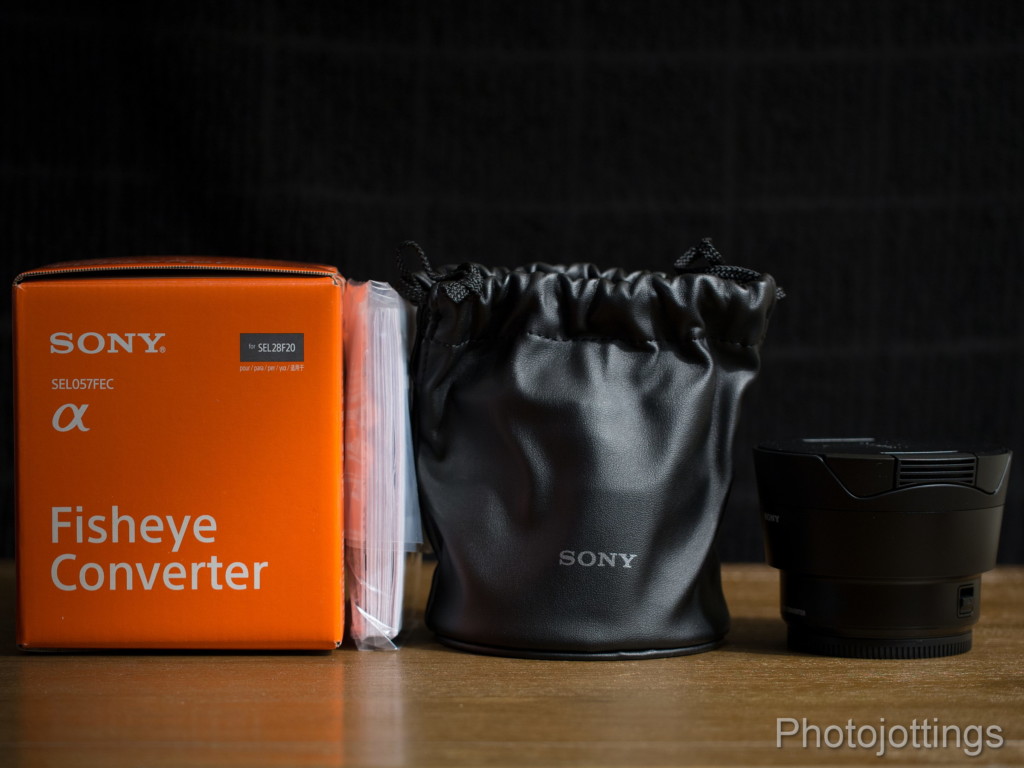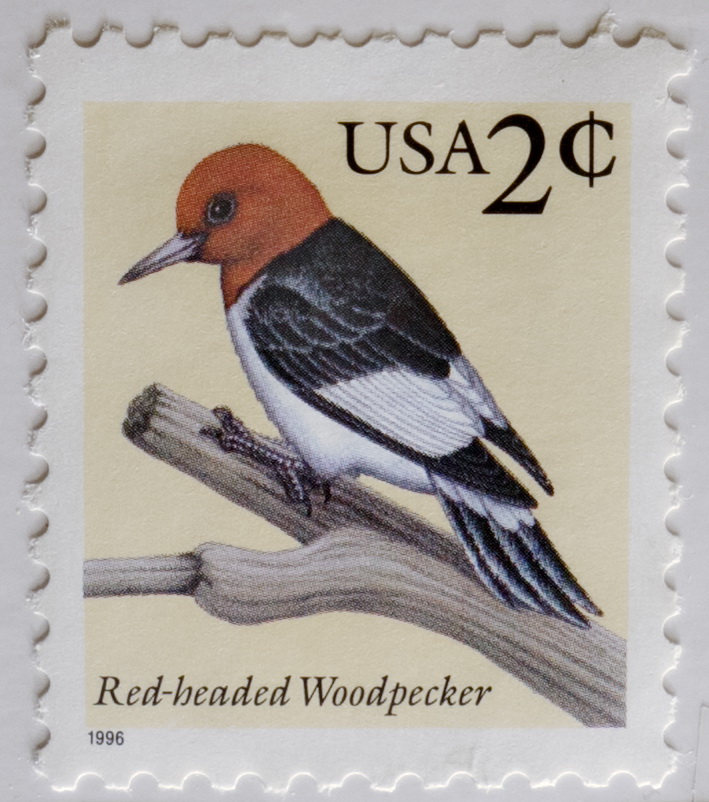
Sony has two converters available for their 28mm F/2 lens, an ultra wide (21mm F/2.8) and a fisheye (16mm F/3.5), each reviewed separately.
The Sony Fisheye converter is one of two for use with the ‘FE’ system, and covers full frame; they will only mount and work on the Sony 28mm F/2 host lens. These converters are not the same as the two similar ones here for Sony’s aps-c system.
Both converter lenses are quite large, especially the fisheye, but fit nicely on the host lens. The Fisheye uses a five element, four group design. The lens has green and magenta color multi coatings, but shows no special elements in the Sony X-ray view, see below. Sony lists the converter as having a focal length of 5/8″ (16mm) on a full frame camera.
An oddity I have to mention; the front cap on the 28mm F/2 lens will secure to the rear cap of both converters, how thoughtful is that?
Mounting is supposed to be done when the camera is turned off, however, for this review, I risked destroying the lens by attaching it with the camera turned on, just for kicks, and nothing bad happened. You can also mount the lens upside down, just like a hood and everything still works fine. Attaching the converter is about the same as putting on a hood: align the orange dots, push and turn clockwise until you hear a click. Unmount by pushing the black tab up and turning until loose.
When mounted, the EXIF data will show the lens as “Fish-eye 16mm F/3.5”, or “Sony 28mm F/2 + Fisheye” or something similar in photo editing software. I see no electrical connections, so I’m assuming the camera knows when it’s attached by identifying the different distortion/vignetting signatures apart from the host lens, but I’m just guessing here, I really don’t know anything about it.
Fit and finish. The lens appears to be made up of mostly plastic, including the mount, but it seems to be made well with a nice fit and finish that perfectly matches Sony’s lenses. Sony claims this lens was designed with ‘dust and slash proofness’ in mind; meaning it is not water proof. The lens is made in Thailand.
Filter size You can’t mount filters to this lens as the hood is non removable, and there is no gel slot, but you may be able to use a square filter system mounted over the entire front, I wouldn’t bother doing that as it will make the lens ridiculously large and cumbersome, which defeats the purpose of this add-on converter in my opinion.
Focusing. This lens uses the 28mm F/2 host lens for focusing, with accuracy and consistency depending on the camera body.
In the box is the lens, front and rear caps, and a vinyl carrying bag.
Specifications
| Official lens name and code | Sony Fisheye converter 16mm F/3.5 MFR# SEL057FEC B&H Photo. |
|---|---|
| Box contents | Front cap, rear cap, vinyl strap sack, and user’s manual in multiple languages. |
| Cost | $300 as of 8/16. |
| Build Quality | plastic, but nice fit and finish. |
| Additional information | This converter is made specifically for the Sony FE 28/2 lens. |
| Optical configuration | 5 elements in 4 groups. |
| Angle of view | 180° diagonally, (105˚ when mounted on an APS-C sensor camera). |
| Aperture | none, uses host lens |
| Coverage for | Sony FE 24x36mm sensor. When using APS-C sensor, the focal length (or capture area in 135 format) is equivalent to about 24mm. |
| Depth of field and focus scales | Nothing. |
| Minimum focus, image plane to subject | About 8.6″ (220mm) using manual focus. |
| Minimum focus, end of lens barrel to subject | About 3.4″ (83mm) from front of lens hood, manual focus. |
| Infinity focus hard stop | N/A |
| Length changes when focusing | N/A |
| Focus ring turn in AF | N/A |
| Filter size | no filters |
| Filter ring rotates | N/A |
| Maximum reproduction ratio | 1:14x AF and MF. |
| Minimum F/stop | N/A |
| Sony Teleconverter compatible | No. |
| Length changes when zooming | N/A |
| Dimensions WxL | 3.7″ x 2.3″ 89mm x 58.5mm. |
| Maximum extended length | Lens does not extend. |
| Weight | 14.8oz, (418g) bare. |
Optical qualities summary.
| Lens flare/ghosting | overall, good control, about the same as the host lens. |
|---|---|
| Light fall-off | seems to be about the same at all apertures. |
| Color fringing | good to excellent control overall. |
| Bokeh | harsh at all apertures, but it’s hard to get blur with this focal length unless doing close work. |
| Color | seems about the same as other Sony lenses. |
| Close-up filter | N/A. |
| Coma | a tiny bit at F/3.5, nothing really noticeable. |
| Regular filters | Can’t use regular filters. |
| Filter size | N/A |
| Distortion | massive barrel type, and by design. Can be corrected well with simple distortion sliders. |
Close focus Shot.
The image below is the usual stamp shot from the old site. The subject is a standard US stamp, 0.87″x 1.0″ or 22mm x 25mm. It’s pretty sharp at all apertures, but also quite small, so no link to a larger version. There is not much working room; subject to lens hood distance is 3.4″ or 83mm. The distortion signature is about the same when focused close-up or at longer distances. As a side note; the ‘1996’ text in the lower left corner of the stamp is a mere 1mm wide in real life!

Dumb usage, and distortion samples.
The first three images show you some of the goofy things you can do with this lens, the last two are corrected, and uncorrected distortion. You can correct fisheye distortion easily in lightroom etc. with the distortion sliders, but doing that will cause the sides to soften considerably. This lens is best used uncorrected in my opinion.
Resolution samples
Below are some full size samples for you to check out. This scene has a lot of detail scattered around the frame, and shows how much the lens sharpens up as you stop down the aperture. The centers are fairly sharp at F/3.5, but suffer from a bit of veiling haze, just like the host lens. As you stop down, things look better. At F/5.6 the centers are pretty sharp, but the sides, and especially the corners are a little soft. At F/8-11 the whole image looks sharp, at which point the lens seems to be maxed out. Out to F/16, and especially F/22 become soft when viewed a full sizes, but it’s not so noticeable when in close situations where depth of field is a larger concern. Resolution images here are from RAW capture and are uncorrected except the ‘F/11 corrected’ image. Please note: mobile devices most likely will not show the full quality of the images.

Click buttons for full size versions.
Conclusion.
The purpose of the Sony Fisheye converter is to turn your Sony FE 28mm into a true 180° fisheye lens; it does the job, and it does it pretty good too! It’s a fun lens, and begs to be stuffed into a small area for the goofy look you get.
A converter that attaches to a host lens may, or may not be the best solution for your needs, it all depends on what’s important to you. If your creativity demands this type of weird look, it may work for you. If you already have the Sony FE 28mm F/2, then it makes good sense, and I would recommend it. If you don’t have the host lens, and will need to buy both, it may not make sense economically if you won’t be using the host lens by itself. Plus, when the converter is added to the Sony 28mm F/2, it becomes a long and heavy package, slightly more so than the Sony 90mm /2.8 macro.
The technical image quality is very good when stopped down. Surprisingly, the sides and corners are pretty sharp at F/8-11, and stopping down further is not necessary unless depth of field is and issue.
All in all, a fun lens that sometimes gets over used now days, but it’s good for some laughs at parties and such. Don’t use this lens for shooting Real Estate unless you’re looking to get fired, there’s too much distortion, and when you correct it, the sides get too soft.
For about $300 you get an auto focusing fisheye with full EXIF data for corrections and your records, not bad when you compare it to the cheap Rokinon and Samyang stuff with no AF or EXIF.
That’s it for the Sony Fisheye 16mm F/3.5 converter review, please check it out here to help support the site.























